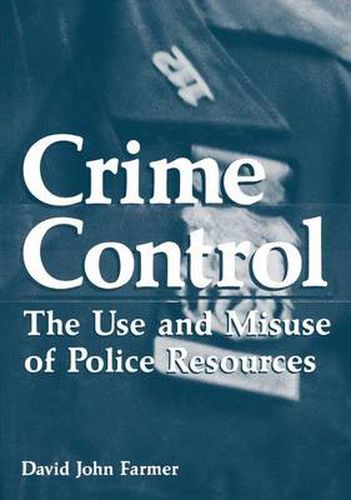Readings Newsletter
Become a Readings Member to make your shopping experience even easier.
Sign in or sign up for free!
You’re not far away from qualifying for FREE standard shipping within Australia
You’ve qualified for FREE standard shipping within Australia
The cart is loading…






This title is printed to order. This book may have been self-published. If so, we cannot guarantee the quality of the content. In the main most books will have gone through the editing process however some may not. We therefore suggest that you be aware of this before ordering this book. If in doubt check either the author or publisher’s details as we are unable to accept any returns unless they are faulty. Please contact us if you have any questions.
The question of how to use police resources productively, par ticularly in this era of tight municipal budgets, is a major con cern for police chiefs and others responsible for crime control. In Crime Control: The Use and Misuse of Police Resources, David J. Farmer provides new insights into this question and sug gests a practical resource allocation approach for police poli cymakers and administrators. The book documents the results of current police resource allocation practices and describes the major research studies that have identified a need to restructure police field operations. It very usefully outlines the development and nature of allocation techniques and ana lyzes the political contexts which influence resource alloca,., tion. After describing planning at the neighborhood level that should inform the allocation process, the author provides a comprehensive planning-budgeting-resources allocation approach to managing a productive police department. This comprehensive approach is illustrated by an account of the Manpower Allocation Review System (MARS), which the author developed and introduced in the New York City Police Department in 1972 when I was commissioner. As I can vii FOREWORD viii attest, the MARS approach had practical utility. For the author, it served as a forerunner to the more elaborate system he describes in this book.
$9.00 standard shipping within Australia
FREE standard shipping within Australia for orders over $100.00
Express & International shipping calculated at checkout
This title is printed to order. This book may have been self-published. If so, we cannot guarantee the quality of the content. In the main most books will have gone through the editing process however some may not. We therefore suggest that you be aware of this before ordering this book. If in doubt check either the author or publisher’s details as we are unable to accept any returns unless they are faulty. Please contact us if you have any questions.
The question of how to use police resources productively, par ticularly in this era of tight municipal budgets, is a major con cern for police chiefs and others responsible for crime control. In Crime Control: The Use and Misuse of Police Resources, David J. Farmer provides new insights into this question and sug gests a practical resource allocation approach for police poli cymakers and administrators. The book documents the results of current police resource allocation practices and describes the major research studies that have identified a need to restructure police field operations. It very usefully outlines the development and nature of allocation techniques and ana lyzes the political contexts which influence resource alloca,., tion. After describing planning at the neighborhood level that should inform the allocation process, the author provides a comprehensive planning-budgeting-resources allocation approach to managing a productive police department. This comprehensive approach is illustrated by an account of the Manpower Allocation Review System (MARS), which the author developed and introduced in the New York City Police Department in 1972 when I was commissioner. As I can vii FOREWORD viii attest, the MARS approach had practical utility. For the author, it served as a forerunner to the more elaborate system he describes in this book.